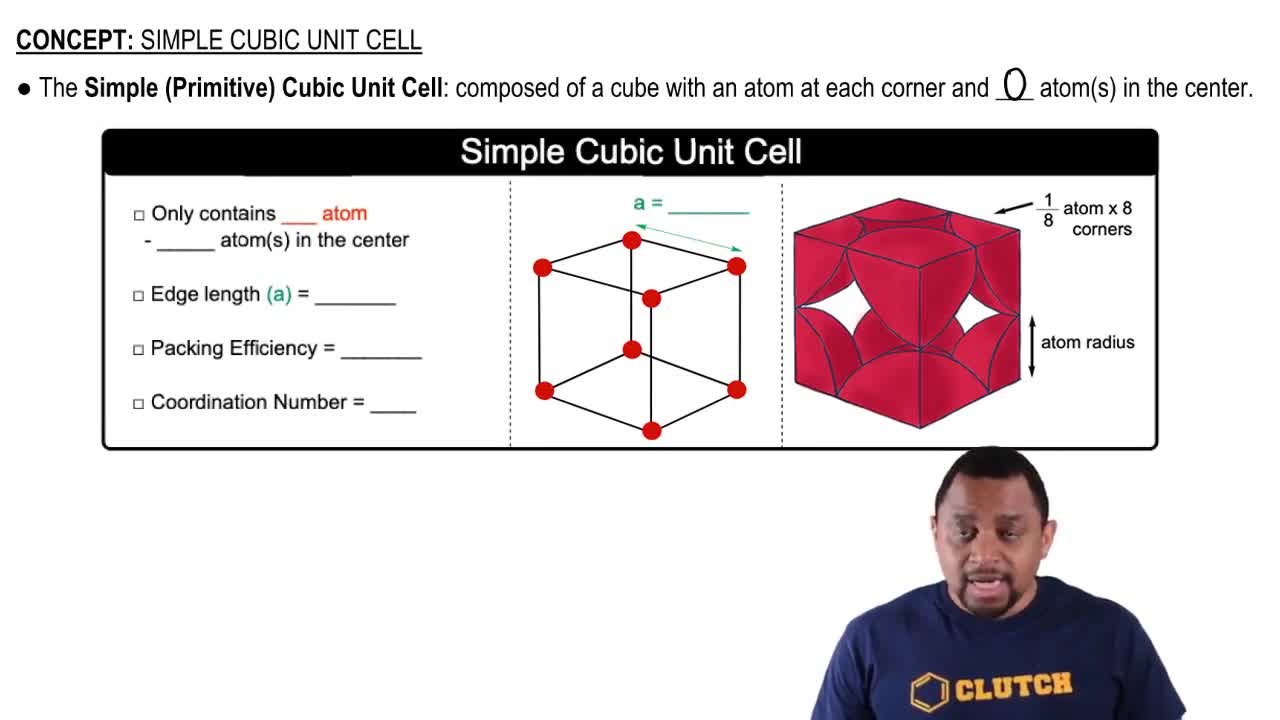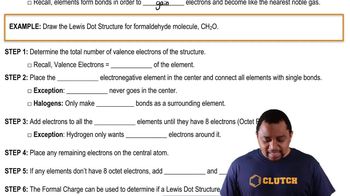Here are the essential concepts you must grasp in order to answer the question correctly.
Ionic Compounds and Charges
Ionic compounds are formed from the electrostatic attraction between positively charged cations and negatively charged anions. In the case of cesium chloride (CsCl), cesium (Cs+) is the cation with a +1 charge, while chloride (Cl-) is the anion with a -1 charge. Understanding the charges of these ions is essential for determining the overall charge balance in the unit cell.
Recommended video:
Unit Cell Structure
A unit cell is the smallest repeating unit in a crystal lattice that reflects the symmetry and structure of the entire crystal. In the cubic unit cell of cesium chloride, Cl- ions occupy the corners, and a Cs+ ion is located at the center. Recognizing the arrangement of ions within the unit cell is crucial for analyzing the charge distribution and confirming electrical neutrality.
Recommended video:
Electrical Neutrality in Crystals
For a crystal to be electrically neutral, the total positive charge must equal the total negative charge. In the CsCl unit cell, there are eight Cl- ions at the corners, each contributing a -1 charge, and one Cs+ ion in the center contributing a +1 charge. By calculating the total charges, one can demonstrate that the unit cell maintains electrical neutrality, as the total charge sums to zero.
Recommended video:
Lewis Dot Structures: Neutral Compounds




